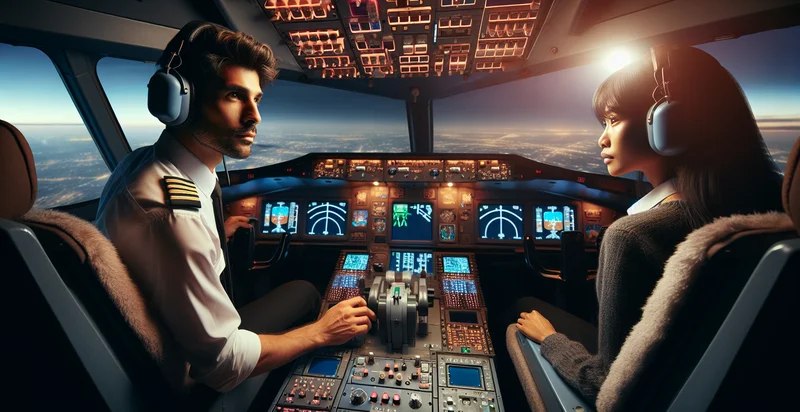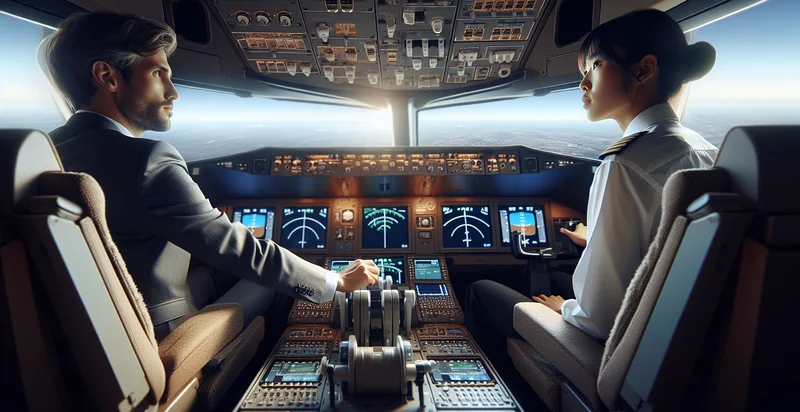Identify co-pilot presence
using AI
Below is a free classifier to identify co-pilot presence. Just upload your image, and our AI will predict if a co-pilot is present - in just seconds.

Contact us for API access
Or, use Nyckel to build highly-accurate custom classifiers in just minutes. No PhD required.
Get started
import nyckel
credentials = nyckel.Credentials("YOUR_CLIENT_ID", "YOUR_CLIENT_SECRET")
nyckel.invoke("co-pilot-presence", "your_image_url", credentials)
fetch('https://www.nyckel.com/v1/functions/co-pilot-presence/invoke', {
method: 'POST',
headers: {
'Authorization': 'Bearer ' + 'YOUR_BEARER_TOKEN',
'Content-Type': 'application/json',
},
body: JSON.stringify(
{"data": "your_image_url"}
)
})
.then(response => response.json())
.then(data => console.log(data));
curl -X POST \
-H "Content-Type: application/json" \
-H "Authorization: Bearer YOUR_BEARER_TOKEN" \
-d '{"data": "your_image_url"}' \
https://www.nyckel.com/v1/functions/co-pilot-presence/invoke
How this classifier works
To start, upload your image. Our AI tool will then predict if a co-pilot is present.
This pretrained image model uses a Nyckel-created dataset and has 2 labels, including Co-Pilot Absent and Co-Pilot Present.
We'll also show a confidence score (the higher the number, the more confident the AI model is around if a co-pilot is present).
Whether you're just curious or building co-pilot presence detection into your application, we hope our classifier proves helpful.
Related Classifiers
Need to identify co-pilot presence at scale?
Get API or Zapier access to this classifier for free. It's perfect for:
- Employee Monitoring: The True image classification function can be used to determine the presence of co-pilots in aviation environments, enhancing safety protocols. Airlines can implement real-time monitoring to ensure that co-pilots are present and alert, reducing the risk of accidents due to human error.
- Smart Workspaces: In corporate environments, this function can help in managing office space by identifying the presence of designated personnel in co-working areas. This can enhance resource allocation, ensuring that workspace is not overcrowded or underutilized.
- Security Surveillance: The image classification function can be deployed in security systems to verify the presence of authorized personnel in restricted areas. By doing so, organizations can enhance security measures, allowing for immediate alerts if unauthorized individuals are detected.
- Collaborative Learning Environments: Educational institutions can utilize this function to monitor the participation of co-pilots (mentors or teaching assistants) in collaborative projects. This can help track engagement levels and improve educational outcomes by ensuring that students receive adequate support.
- Remote Operations: In industries like oil and gas, this function can identify the presence of co-pilots during remote operational activities. By ensuring that trained personnel are present, companies can mitigate risks and enhance decision-making in critical environments.
- Healthcare Applications: Medical facilities can use this technology to confirm the presence of co-pilots (nurses or support staff) in patient care areas. By ensuring adequate staffing levels, hospitals can improve response times and overall patient care quality.
- Automated Delivery Drones: The function can be integrated into drone technology to confirm the presence of co-pilot operators during delivery missions. This ensures compliance with regulations and enhances operational safety by confirming that trained personnel are overseeing the delivery process.


